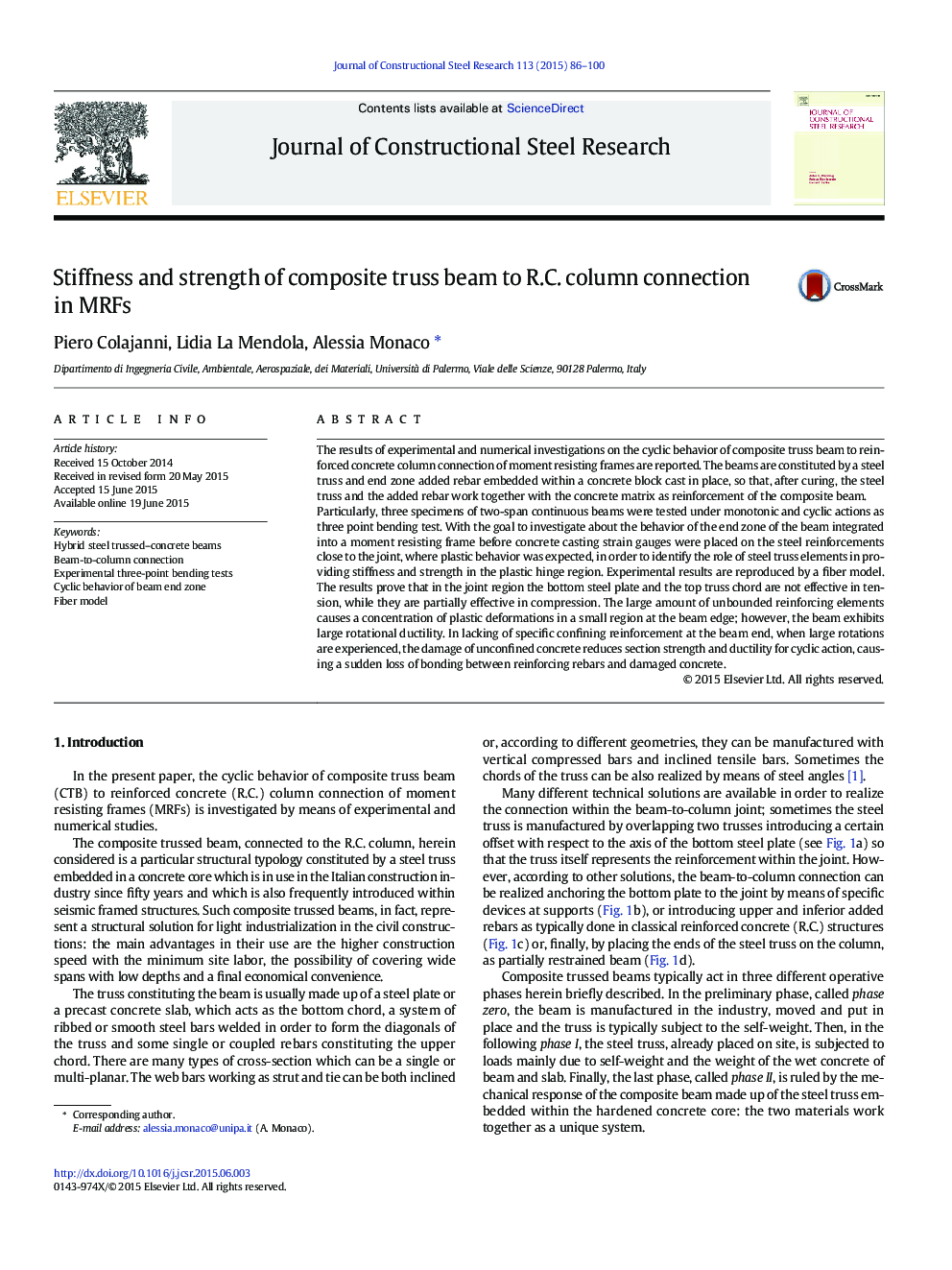| کد مقاله | کد نشریه | سال انتشار | مقاله انگلیسی | نسخه تمام متن |
|---|---|---|---|---|
| 284452 | 509147 | 2015 | 15 صفحه PDF | دانلود رایگان |

• Behavior of hybrid steel trussed–concrete beams
• Investigation on the beam-to-column connection in MRF structures
• Experimental three-point bending tests under monotonic and cyclic actions
• Cyclic behavior of beam end zones
• Fiber model for the interpretation of the experimental data
The results of experimental and numerical investigations on the cyclic behavior of composite truss beam to reinforced concrete column connection of moment resisting frames are reported. The beams are constituted by a steel truss and end zone added rebar embedded within a concrete block cast in place, so that, after curing, the steel truss and the added rebar work together with the concrete matrix as reinforcement of the composite beam.Particularly, three specimens of two-span continuous beams were tested under monotonic and cyclic actions as three point bending test. With the goal to investigate about the behavior of the end zone of the beam integrated into a moment resisting frame before concrete casting strain gauges were placed on the steel reinforcements close to the joint, where plastic behavior was expected, in order to identify the role of steel truss elements in providing stiffness and strength in the plastic hinge region. Experimental results are reproduced by a fiber model. The results prove that in the joint region the bottom steel plate and the top truss chord are not effective in tension, while they are partially effective in compression. The large amount of unbounded reinforcing elements causes a concentration of plastic deformations in a small region at the beam edge; however, the beam exhibits large rotational ductility. In lacking of specific confining reinforcement at the beam end, when large rotations are experienced, the damage of unconfined concrete reduces section strength and ductility for cyclic action, causing a sudden loss of bonding between reinforcing rebars and damaged concrete.
Journal: Journal of Constructional Steel Research - Volume 113, October 2015, Pages 86–100